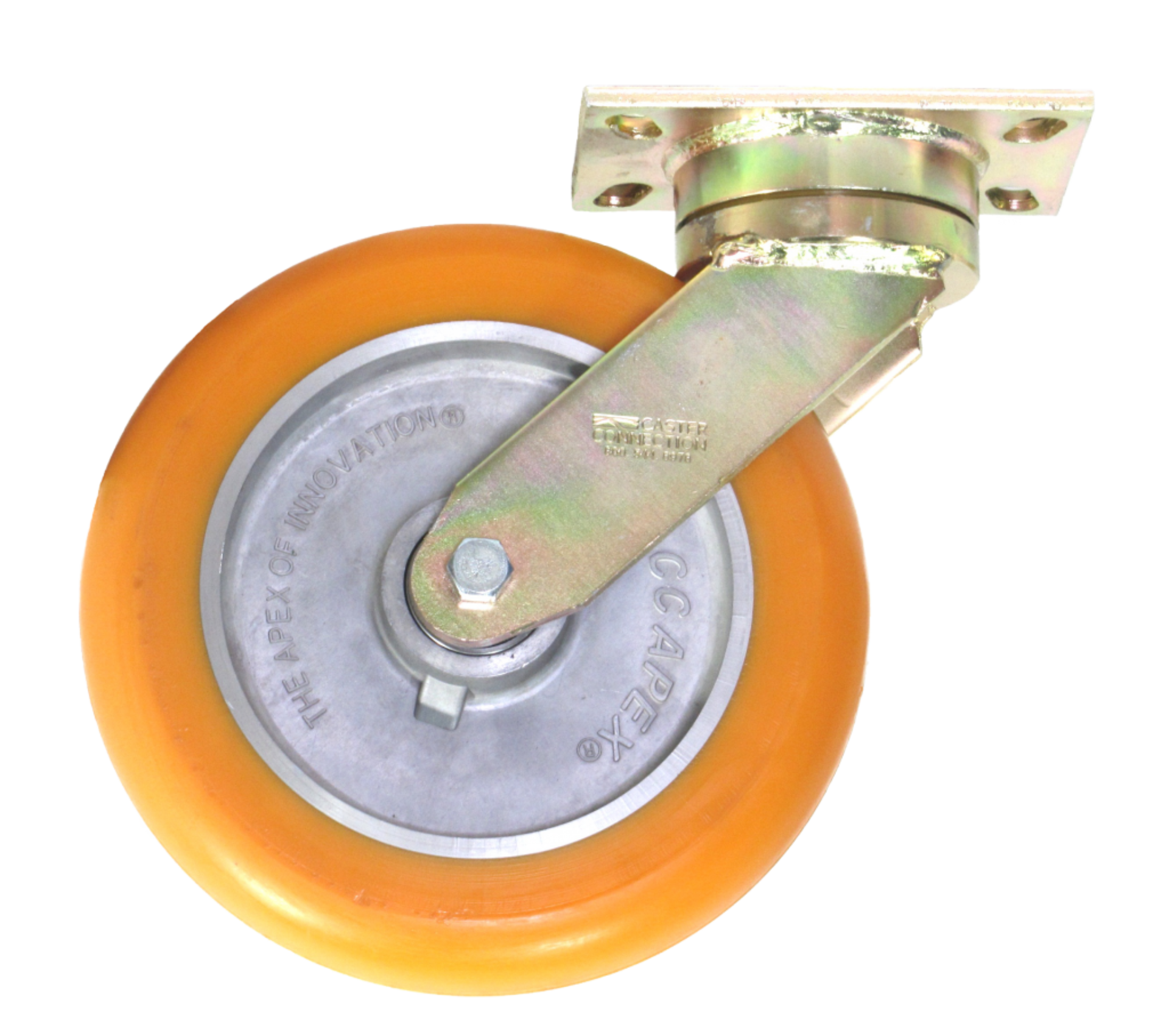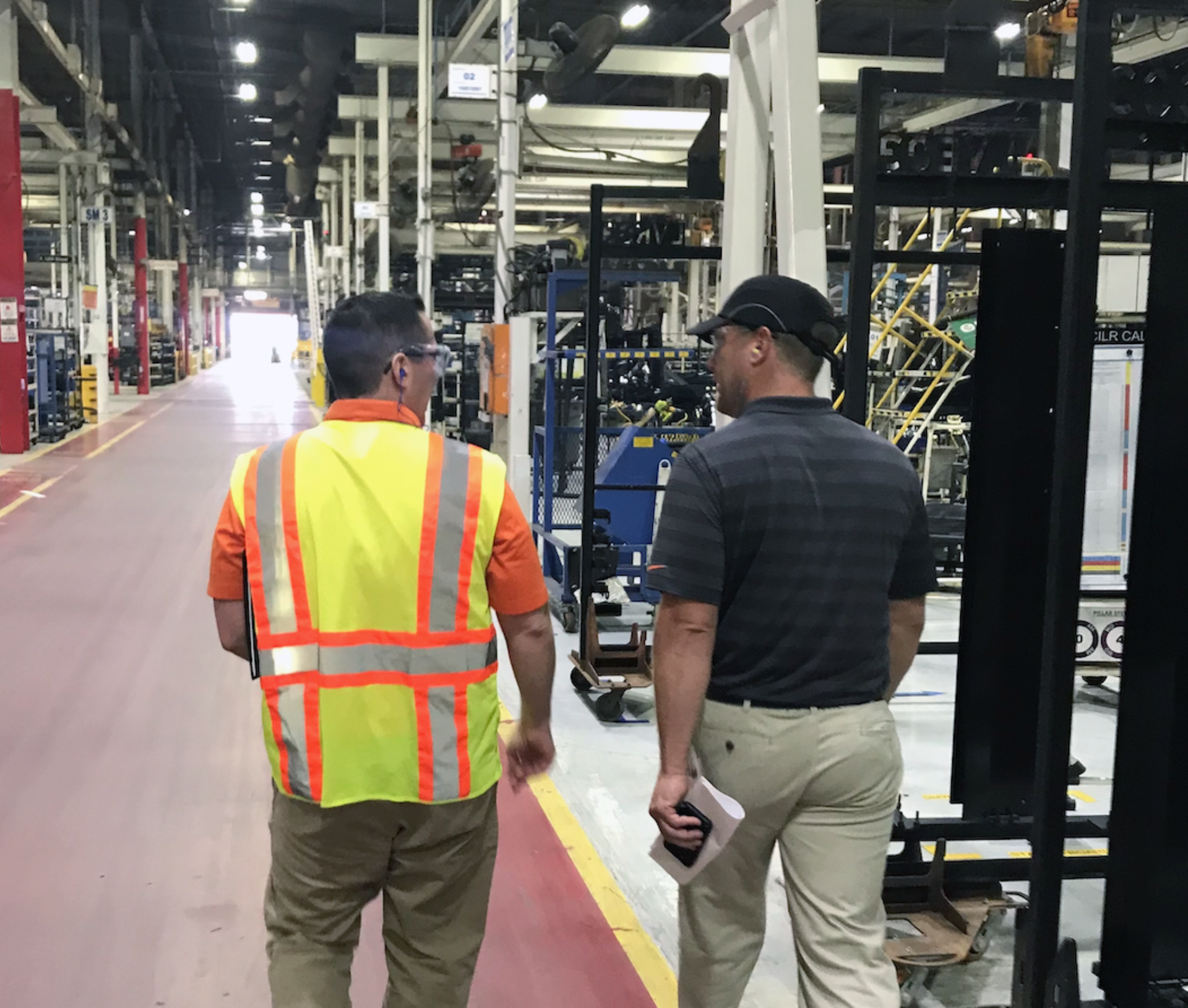Ergonomic Casters Education

What are Ergonomics?
Ergonomics is the science of designing and arranging tools, tasks, and environments to fit the people who use them. In material handling, an ergonomic approach reduces strain on employees, minimizes injury risk, and enhances productivity. When your equipment is designed with ergonomics in mind, employees work with less fatigue and experience fewer injuries, benefiting both worker wellbeing and operational efficiency.
Why Ergonomics Matter for Casters
When it comes to pushing or pulling, your back is the most likely part of your body to receive a debilitating injury. Choosing ergonomic casters is critical because it reduces the physical demands of moving heavy loads. Properly designed casters minimize push/pull forces, which helps prevent strain and reduces the likelihood of repetitive stress injuries, resulting in a safer and more efficient workplace.

Push/Pull: A Key Metric for Evaluating Ergonomics

What is Push/Pull?
Push/pull is a key ergonomic measurement that gauges the force required to start and sustain the movement of a cart or piece of equipment. This force is a direct indicator of how ergonomic your caster selection is: the lower the force, the easier and safer it is to maneuver equipment.
How is Push/Pull Measured?
To measure push/pull accurately, we use devices force gauges to apply and record the exact force needed to set a loaded cart in motion and keep it moving. Essential components of the measurement process include:
- Surface Type: Using the same surface type as the cart’s actual work environment (such as smooth concrete or carpet) is critical for accurate readings.
- Load Weight: Testing with a load representative of everyday use ensures the data’s relevance.
- Speed and Handle Angle: Consistent speed and handle angle are essential to producing repeatable, reliable results.
This testing approach provides a precise snapshot of push/pull demands, ensuring that the data you receive is reflective of real-world conditions.

Proper Measurement Techniques for Accurate Results
Force gauges are precision instruments designed to measure the exact amount of force applied to move an object. These tools record both initial push force (the force required to start movement) and sustained pull force (the force needed to keep the load moving). By carefully capturing push/pull data in a variety of applications, we can confidently recommend casters that meet ergonomic standards and improve operator safety. Here are some ways we ensure proper push/pull measurement of our products and their usage for partner applications:

Calibration
All force gauges are calibrated regularly to ensure they measure accurately, reducing measurement error.

Consistent Conditions
We simulate conditions that match your workplace, whether testing on smooth warehouse floors or carpeted areas.

Operator Positioning
Measurements are taken from a position aligned with typical operator height, often waist-level, to mimic natural movement.

Repetition for Consistency
Repeated measurements ensure accuracy, with any anomalies filtered out to prevent misleading data.
UNDERSTANDING AND IMPROVING ERGONOMICS
SO, HOW SERIOUS, LIKELY, AND COSTLY ARE BACK INJURIES?
When we look at MSDs (Musculoskeletal Disorders), basically injuries to your bones, muscles, and joints, the total cost each year is estimated to be at least $50 billion, but this is only the dollar amount; the pain and effect on the lives of those who suffer from these injuries is much higher. Back injuries are a significant portion of these specific injuries.
UNDETECTED BACK INJURIES AND PUSH/PULL ISSUES
Back injuries affect every aspect of your business and life. In material handling, you’ll be transporting your product on carts of some sort. If you push or pull these carts at all by hand, you’ll be using your back in the same way thousands of times, and the worst part is that you won’t be able to recognize that you’re injuring your back until it’s too late. The amount of force required to push or pull (push/pull) can be changed with different types of equipment, but first you need to get an accurate reading, and second, you need to know exactly what guidelines to follow.

OSHA Is Cracking Down on Ergonomics!
Free Whitepaper on OSHA's NEP for Warehousing & Distribution
Discover how to navigate the new OSHA NEP for warehouse and distribution safety with ergonomic caster solutions designed and engineered to meet the demanding environments of distribution centers.
In This Whitepaper, You Will Learn:
- What is a NEP and how to navigate this new National Emphasis Plan for warehouse and distribution facilities like a pro to protect and retain employees while avoiding costly OSHA violations.
- How to unpack what in involved in this NEP, whether you're business could be affected, and how this can impact that daily grind of your business operations.
- What OSHA is looking for and how to transform your ergonomic game-because who said compliance needs to be stressful?


























